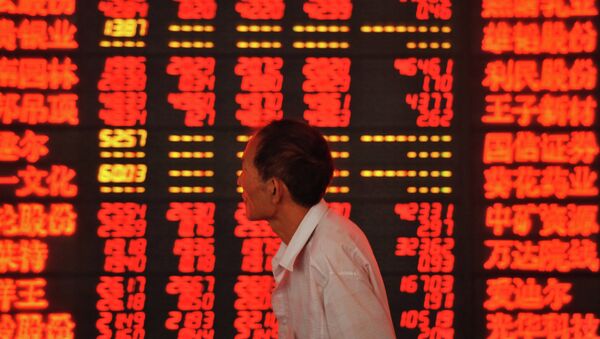Cuts in the base interest rate, undertaken by the PBOC, along with an increase in governmental spending (by both central and provincial administrations) helped drive the issuance of new commercial loans and money supply by Chinese commercial banks, data by the PBOC suggests. The mainland's aggregate financing (the total volume of credit money) rose to 1.02 trln renminbi ($158 bln) in November, whilst M2 money supply expanded by an annualized 13.7%. The renminbi FX rate dropped on the news, providing some support to the Communist nation's stagnating exports.
Still, the expansion of credit and money supply raises old concerns about the excessive indebtedness of the mainland's economy. Meanwhile, after a short strengthening, the renminbi retreated again, while Beijing is attempting to fix its exchange rate below its effective fundamental level. Acceleration in lending, amidst the still brewing volatility and controversial signals form the nation's economy suggests only a temporary relief.
"The latest Chinese monetary data provides further evidence that the Chinese economy is stabilizing," Rajiv Biswas of the Singapore-based IHS Global Insight said. "The upturn in new lending reflects PBOC monetary policy easing in recent months through policy rate and reserve requirement ratio cuts."
Mainland China's commercial banks issued some $109.81 worth of new loans in November, above previous expectations, and 38% above that the previous month. The number indicates a robust rise in demand for regular credit, as well as an increase in bonds issuance, and corporate attraction of capital in the stock market.
The rise in credit, however, also includes riskier shadow banking operations, which are shrinking in volume, according to the PBOC estimates. New lending is mostly represented by medium- and longer-term loans, in line with Beijing's aspirations to spur economic expansion in the mainland.
All that suggests Chinese economic growth might gain momentum, fueled by cheaper credit thanks to the central bank stimulus.
Such optimism comes at a cost. In October, Beijing's fiscal spending skyrocketed by 36.1%, its three-year highest, while outstanding loans rose in November by only 14.9% year-on-year, undershooting the expected gain of 15.3%, and still below that in October at 15.4%.
These numbers suggest a very mixed situation, where mainland China's public and corporate debts are rising and the central bank is loosening monetary policies in hopes of growth acceleration, but the decline in the economy's productive capacity and shrinking exports put any acceleration into reasonable doubt.
"Aside from seasonal factors driving up new loans, the rebound was weaker than expected and lower than the 852.7 billion yuan in November 2014, indicating that domestic demand remained soft and banks were cautious to provide new loans amid rising credit risks," according to a note by Australia and New Zealand Banking Group. The institution is calling for further monetary easing by the PBOC, including rate cuts and loosening reserve requirements for commercial banks.
While GDP expansion slowed to an annualized 6.9% in Q3, Premier Li Keqiang vowed to achieve yearly growth of ‘about 7%'. The mainland has performed rather well investment-wise though, with some $114 bln FDI attracted throughout the first 11 months this year, 7.9% above the previous year.
While there is little ground for excessive optimism in regard to the mainland's economic performance, the overall outlook is hardly too negative. While the uncertainty of China's business confidence still lingers, additional stimulus measures by the PBOC might ignite the debt-fueled growth model that worked well for the likes of the Eurozone at their time.






